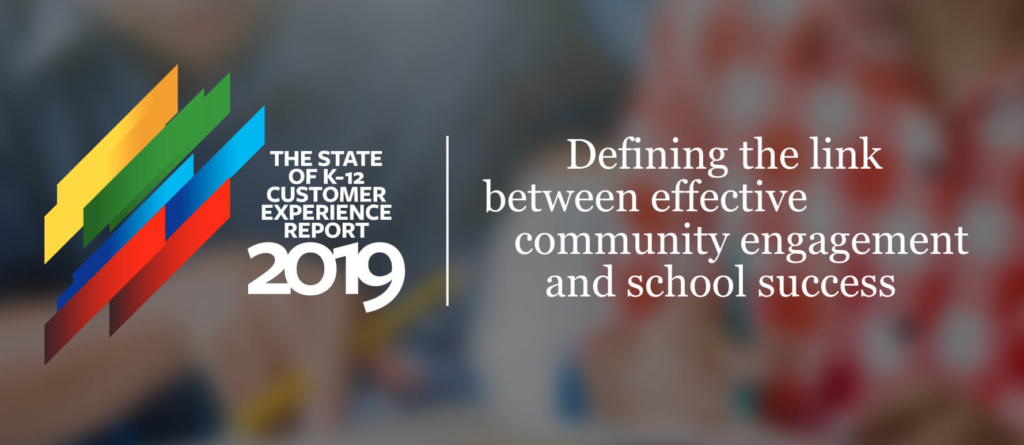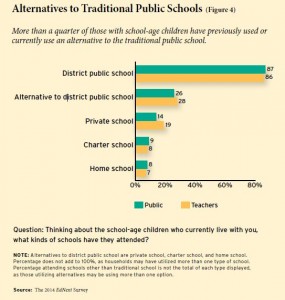
When it comes to connecting with the parents and communities they serve, many school leaders sound like Strother Martin in the movie “Cool Hand Luke”:
“What we’ve got here is failure to communicate.”
That’s the conclusion of nearly half of the 500 school leaders nationwide surveyed in the recently released “The State of K-12 Customer Experience 2019.” Conducted by K12 Insight, a Herndon, Virginia-based school research and communications firm, with support from the National School Public Relations Association and the National School Boards Association, the report solicited input from superintendents, central office staff, building principals and school board members.
Only about half of the participants believed their school district could engage and build trust with parents and community members. Slightly more than half (56 percent) were confident in their ability to effectively communicate with their own employees.
Many parents would agree. According to a 2017 study by Rice University researchers, parents listed family and community engagement as the most important element of satisfaction with their child’s school — and that districts frequently fail to meet their demands.
Only 34 percent of the more than 7,200 public school parents surveyed said they were “very satisfied” with family and community engagement. Only 29 percent believed they had a voice in running their child’s school. Parents also expressed low rates of satisfaction with administration and staff members’ eagerness to ask for input.
According to the K12 Insight survey, educators are well aware of the consequences when trust is lacking – “it often leads to unnecessary distractions and siphons quality resources away from their core focus: educating children.”
School quality doesn’t seem to matter -- even academically strong schools said they struggled to connect with their communities. Not surprisingly, though, size matters -- the bigger the district, the greater the communication gap. School leaders representing districts with fewer than 75,000 ranked their customer service quality higher than those from school districts with 75,000-plus students.
That speaks to the unwieldiness of large bureaucracies and centralized systems. There’s ample anecdotal evidence – perhaps your own experience – of parents expressing frustration with an unresponsive administration, and navigating red tape. Even well-meaning administrators who would like to help might feel overwhelmed.
Another contributor: state legislatures that impose layer upon layer of regulation on districts, so that schools become more accountable to lawmakers than they are to parents. If schools had fewer top-down mandates to comply with, they might have more flexibility to connect with their communities. And if parents had more control over their children’s education, school officials might be more receptive to addressing their needs.
Decentralizing education delivery systems and giving families more choices might go a long way toward restoring bonds between educators and parents. The Rice University study found that 50 percent of parents at private schools, and 47 percent of those at charter schools, were “very satisfied” with how their schools communicated with them.
That may be because parents were able to find the schools that best match what they desire for their children – and that those schools are better able to provide them with what they want. Those that don’t won’t last long if enough families go elsewhere.
Certainly, districts can try harder to engage parents (in the K12 Insight survey, 19 percent of school leaders reported that they have no district employee tasked with monitoring customer service quality). More information, more assistance, and more empathy with parents might build more trust.
Ultimately, though, districts face structural barriers to closing the communication gap. They can be overcome by giving parents more say in their children’s education, and better access to the teachers and administrators who deliver it.
School choice will soon be the new normal. According to Education Next’s latest annual poll, 1 in 4 families with school-age children have tried alternatives to district schools such as home schools, charter schools or private schools. Interestingly, 28 percent of public school teachers have tried such alternatives, with 19 percent – 5 points higher than the general public – sending their kids to private schools.
 “School choice is no longer an abstract concept,” write researchers Michael Henderson, Paul Peterson and Martin West. “It is part and parcel of the American educational fabric directly affecting 26% of all Americans living with school-age children.”
“School choice is no longer an abstract concept,” write researchers Michael Henderson, Paul Peterson and Martin West. “It is part and parcel of the American educational fabric directly affecting 26% of all Americans living with school-age children.”
The 2014 poll has plenty of other interesting findings, including continuation of several trends observed in last year’s poll.
Public support for vouchers for low-income children continues to fall, dropping from 41 to 37 percent while opposition increased from 45 to 51 percent.
At the same time, support for universal vouchers increased to 50 percent while support for tax-credit scholarships rose to 60 percent. Tax-credit scholarships, like the kind administered by Step Up For Students, a co-host of this blog, remain the most popular school choice program among members of the general public.
Other findings remain the same. For example, American continue to believe teachers should be paid more and public school spending should increase. But this doesn’t hold true once respondents are notified of average teacher salaries and per-pupil spending amounts. Support for increasing teacher pay drops 17 points while support for increasing per-pupil spending takes a 25 point plunge once respondents are informed of the true costs of each.
Other nuggets worth mentioning: Teachers would rather see themselves paid more than invest in class size reduction once they know the true cost of the latter. The general public also agrees that increasing teacher pay is preferable to class size reductions once they are aware of the actual costs.
Teachers and tenure: The general public gives 1 of every 5 teachers a “D” or “F” grade while teachers feel a bit more generous, grading 1 of 10 teachers with a “D” or “F.” Of course, far fewer than 10 percent of teachers are relieved of their jobs for poor performance.
The researchers used this finding to segue into the hot topic of tenure. Researchers found 50 percent of the general public opposed teacher tenure while 32 percent favored it. Furthermore, 60 percent of the public liked the idea of tying tenure to teacher performance. Only 9 percent of the general public that indicated it liked tenure also opposed using student test data to determine it. Among teachers, 60 percent favored tenure and only 31 percent liked tying it to student achievement.
Funny fun fact: Public support for Common Core fell from 65 percent to 53 percent between 2013 and 2014, but the concept still enjoys 68 percent support so long as the words “Common Core” aren’t used to describe it. Sounds like Common Core advocates should have run the name past a few focus-groups.
There are plenty of other neat findings in this year’s poll, so take a peek for yourself.